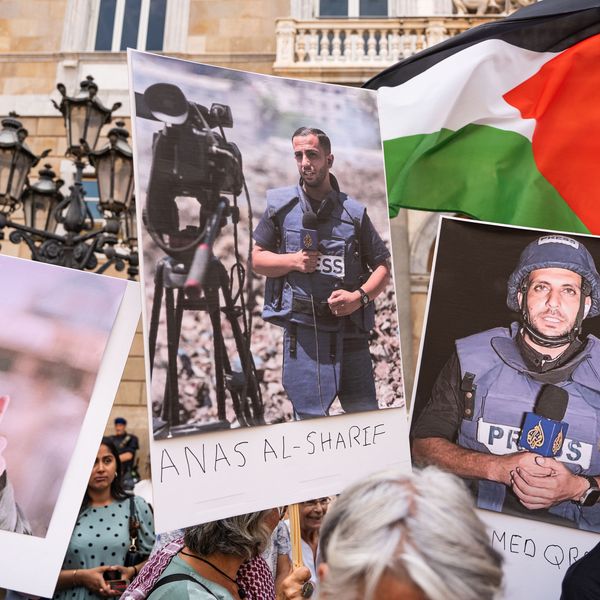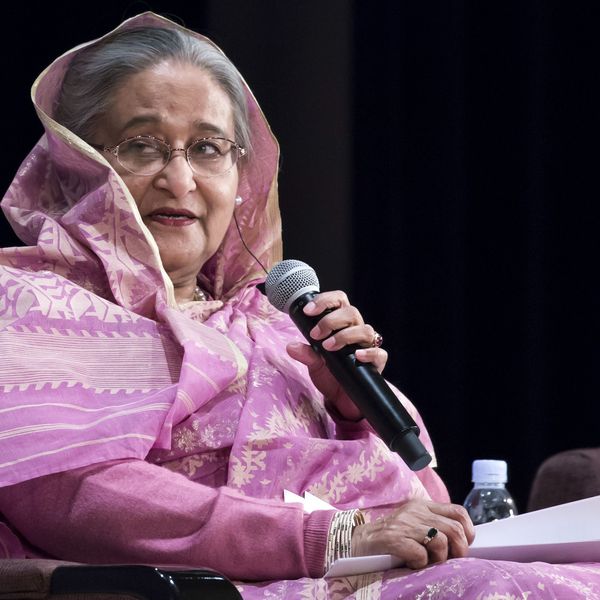Killing Fields Photographer Dith Pran dies
The Cambodian photographer whose life story under the brutal Khmer Rouge regime was recreated in the film The Killing Fields has died in New Jersey. Dith Pran, 65, had been ill with pancreatic cancer.
His death was announced yesterday by Sydney Schanberg, a former New York Times correspondent who worked with Pran in the early 1970s covering the rise of Pol Pot and Cambodia's civil war.
"Pran was a true reporter, a fighter for the truth and for his people," Schanberg told the Associated Press.
Schanberg has credited Pran with coming up with the term the killing fields to describe the carnage exacted by Pol Pot, who tried to erase all western influence from Cambodia after he took control of the country in 1975. About 2 million Cambodians were killed in four years. The term became the title of the 1984 film.
The two men met in 1972 when Schanberg was posted to Cambodia. Pran served as a translator and fixer and at one point saved Schanberg's life from trigger-happy Khmer Rouge fighters.
Schanberg's coverage of Cambodia won him a Pulitzer prize in 1976, which he insisted on sharing with Pran.
By that point, it was unclear whether Pran was still alive. While Schanberg had managed to get Pran's wife and four children on to one of the last US helicopters out of Phnom Penh before the capital fell to Pol Pot he was unable to save his colleague.
Pran was captured by the Khmer Rouge and sent to a forced labour camp. For several years there was no word of his fate. But Pran survived by passing himself off as an uneducated peasant. He eventually escaped on foot to Thailand in 1979, where he sent a message to Schanberg. He arrived in New York a year later to become a photographer for the New York Times and a powerful advocate for the Cambodian people and their suffering under Pol Pot and later Vietnamese occupation.
(c) 2008 The Guardian
An Urgent Message From Our Co-Founder
Dear Common Dreams reader, The U.S. is on a fast track to authoritarianism like nothing I've ever seen. Meanwhile, corporate news outlets are utterly capitulating to Trump, twisting their coverage to avoid drawing his ire while lining up to stuff cash in his pockets. That's why I believe that Common Dreams is doing the best and most consequential reporting that we've ever done. Our small but mighty team is a progressive reporting powerhouse, covering the news every day that the corporate media never will. Our mission has always been simple: To inform. To inspire. And to ignite change for the common good. Now here's the key piece that I want all our readers to understand: None of this would be possible without your financial support. That's not just some fundraising cliche. It's the absolute and literal truth. We don't accept corporate advertising and never will. We don't have a paywall because we don't think people should be blocked from critical news based on their ability to pay. Everything we do is funded by the donations of readers like you. Will you donate now to help power the nonprofit, independent reporting of Common Dreams? Thank you for being a vital member of our community. Together, we can keep independent journalism alive when it’s needed most. - Craig Brown, Co-founder |
The Cambodian photographer whose life story under the brutal Khmer Rouge regime was recreated in the film The Killing Fields has died in New Jersey. Dith Pran, 65, had been ill with pancreatic cancer.
His death was announced yesterday by Sydney Schanberg, a former New York Times correspondent who worked with Pran in the early 1970s covering the rise of Pol Pot and Cambodia's civil war.
"Pran was a true reporter, a fighter for the truth and for his people," Schanberg told the Associated Press.
Schanberg has credited Pran with coming up with the term the killing fields to describe the carnage exacted by Pol Pot, who tried to erase all western influence from Cambodia after he took control of the country in 1975. About 2 million Cambodians were killed in four years. The term became the title of the 1984 film.
The two men met in 1972 when Schanberg was posted to Cambodia. Pran served as a translator and fixer and at one point saved Schanberg's life from trigger-happy Khmer Rouge fighters.
Schanberg's coverage of Cambodia won him a Pulitzer prize in 1976, which he insisted on sharing with Pran.
By that point, it was unclear whether Pran was still alive. While Schanberg had managed to get Pran's wife and four children on to one of the last US helicopters out of Phnom Penh before the capital fell to Pol Pot he was unable to save his colleague.
Pran was captured by the Khmer Rouge and sent to a forced labour camp. For several years there was no word of his fate. But Pran survived by passing himself off as an uneducated peasant. He eventually escaped on foot to Thailand in 1979, where he sent a message to Schanberg. He arrived in New York a year later to become a photographer for the New York Times and a powerful advocate for the Cambodian people and their suffering under Pol Pot and later Vietnamese occupation.
(c) 2008 The Guardian
The Cambodian photographer whose life story under the brutal Khmer Rouge regime was recreated in the film The Killing Fields has died in New Jersey. Dith Pran, 65, had been ill with pancreatic cancer.
His death was announced yesterday by Sydney Schanberg, a former New York Times correspondent who worked with Pran in the early 1970s covering the rise of Pol Pot and Cambodia's civil war.
"Pran was a true reporter, a fighter for the truth and for his people," Schanberg told the Associated Press.
Schanberg has credited Pran with coming up with the term the killing fields to describe the carnage exacted by Pol Pot, who tried to erase all western influence from Cambodia after he took control of the country in 1975. About 2 million Cambodians were killed in four years. The term became the title of the 1984 film.
The two men met in 1972 when Schanberg was posted to Cambodia. Pran served as a translator and fixer and at one point saved Schanberg's life from trigger-happy Khmer Rouge fighters.
Schanberg's coverage of Cambodia won him a Pulitzer prize in 1976, which he insisted on sharing with Pran.
By that point, it was unclear whether Pran was still alive. While Schanberg had managed to get Pran's wife and four children on to one of the last US helicopters out of Phnom Penh before the capital fell to Pol Pot he was unable to save his colleague.
Pran was captured by the Khmer Rouge and sent to a forced labour camp. For several years there was no word of his fate. But Pran survived by passing himself off as an uneducated peasant. He eventually escaped on foot to Thailand in 1979, where he sent a message to Schanberg. He arrived in New York a year later to become a photographer for the New York Times and a powerful advocate for the Cambodian people and their suffering under Pol Pot and later Vietnamese occupation.
(c) 2008 The Guardian

